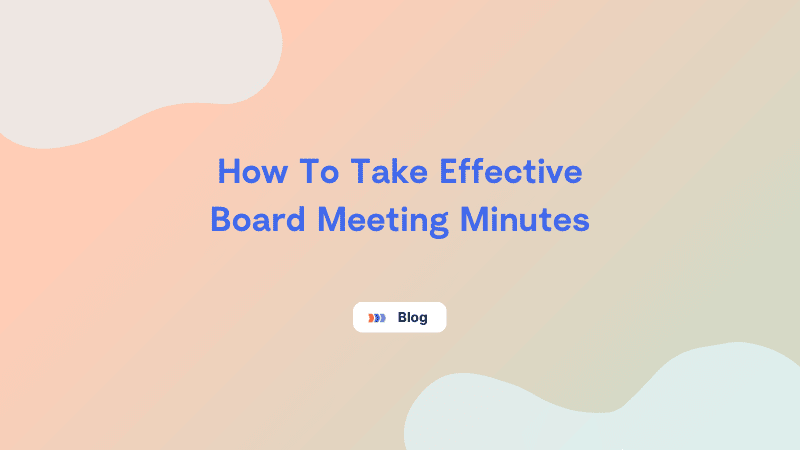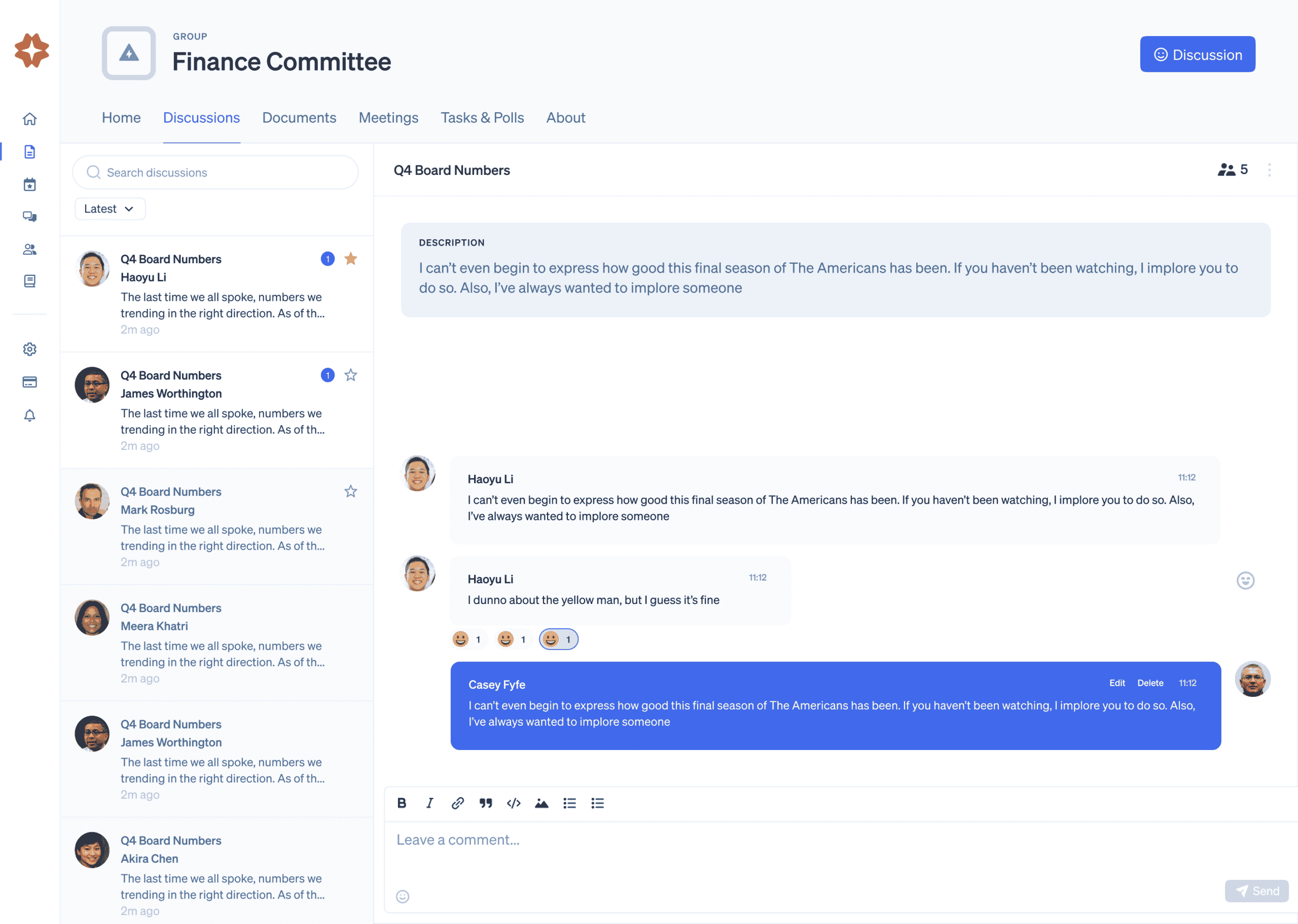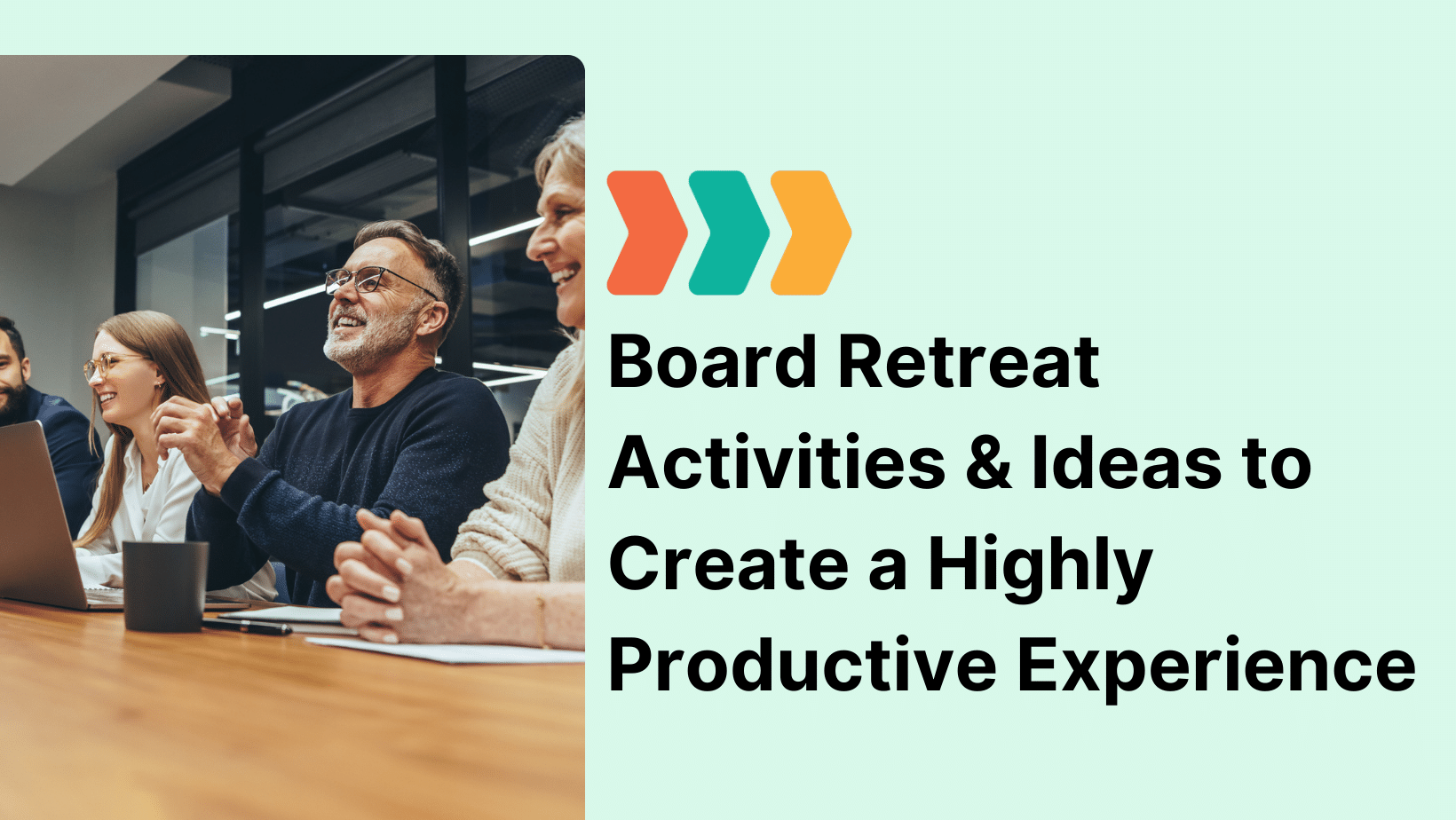When a board gathers to take action and push ahead for the good of an organization, the record of those actions must be well-kept and accessible. Taking minutes is a common part of most board meeting procedures. Although taking, keeping, and reading board meeting minutes may seem like a dull task, they are essential to having a well-managed board. There are a lot of reasons to keep concise board meeting minutes. Benefits include:
- Board meeting minutes allow members who couldn’t be in attendance to remain up to speed on board and organization affairs. Members of the board often lead very busy lives outside of their involvement, and attending every meeting is not always possible. Having concise and well-structured meeting minutes will help those who could not be in attendance to understand what was accomplished and what their responsibilities are if any.
- Board meeting minutes are necessary to preserve the history of the board and organization. If a present or future board needs to reference the actions of the past, they need the minutes to do so.
- Board meeting minutes have a significant legal purpose. They show a board is fulfilling its legal obligations and following its own procedures and bylines. The board meeting minutes legal requirements will vary by organization, so make sure that you are familiar with the laws surrounding your organization.
- Board meeting minutes are concrete communication between the board and external parties. They can serve as a critical form of communication between the board and external stakeholders. If someone wants to learn more about the organization, how/why it functions, and what is being accomplished to further the mission, giving them access to the board minutes is a great way to help them feel included.
Board management platforms like Boardable can remove the guesswork and human error from board meeting minutes. Our Minutes Maker feature assists users with every aspect of writing board meeting minutes, starting with the agenda and ending with sending out the finished minutes to the board and beyond.
Board Meeting Minutes Format
While the board meeting minutes format might look different for every organization, most board meeting minutes include several standard elements. If you’re wondering how to write board meeting minutes, here are some examples of standard inclusions:
- Date, time, location: These are important compliance notes that may be helpful in the case of any litigation or a useful reference in a discussion about moving meeting times or locations.
- The type of meeting and who was in attendance, including non-voting members: For meetings open to the public, having a sign-in sheet can be a helpful tool to ensure everyone’s name is captured.
- Record of motions, seconds, and the resolution of the motion. The purpose of meeting minutes is to record what was accomplished during the meeting, so motions and resolutions are incredibly important.
- A general capture of topics discussed under the appropriate agenda items: Give those who could not be in attendance an overall idea of what was discussed without overwhelming detail.
The Board of directors meeting minutes should also be written in the past tense. In regards to capturing the results of motions, some organizations also include the names of who voted and how. Some organizations actively recommend against this. Consult with your board of directors and record how you want the meetings to be presented within the bylaws. This will give current and future minute-takers a document to reference when looking for board meeting minutes examples.
How To Take Meeting Minutes
If you’re wondering how to take meeting minutes, there are a few best practices that you can use to make it easier on yourself.
- Use the agenda as a template
- Board meeting minutes should follow the order of the agenda, making it simple to jot down actions as they occur.
- Board meeting minutes should follow the order of the agenda, making it simple to jot down actions as they occur.
- Take meeting minutes digitally
- The final version of board meeting minutes is often distributed or stored electronically, which means that sooner or later, meeting minutes will have to be digitized. Taking minutes electronically from the beginning means capturing more information faster and less post-processing after the meeting has ended.
- The final version of board meeting minutes is often distributed or stored electronically, which means that sooner or later, meeting minutes will have to be digitized. Taking minutes electronically from the beginning means capturing more information faster and less post-processing after the meeting has ended.
- Utilize board management software
- A meetings management software like Boardable helps organize the minutes, share them with board members, and annotate for questions. The Minutes Maker tool at Boardable was specifically designed to streamline the process of creating minutes. Rather than work from a board meeting minutes sample doc, the Minutes Maker tool uses a checklist that you create to make sure that it captures all the essentials of the business meeting minutes. PDFs are the best way to export meeting minutes as they are not easy to edit, and meeting minutes should not be edited directly by anyone who is unauthorized to do so.
If you’re looking for sample board meeting minutes pdf, try looking at the minutes from the month prior. If you’re looking to upgrade the way your minutes are recorded, Boardable can be a great springboard to jump from.
What Should Not Be Included In Meeting Minutes
Knowing what should not be included in meeting minutes is just as important as knowing what should be included. Meeting minutes should not include:
- Direct quotes in any form. Board meeting minutes should not be read as transcripts.
- Personal opinions in any form. These could potentially open the board to liability or reflect poorly on the board in the future. It is best to leave them out altogether.
- Too much summarization of information presented at the meeting. Reports or supporting materials regarding the meeting can be attached to the minutes as exhibits.
- Conversations on items not included on the agenda, unless brought up underneath New Business.
It is typical that at the beginning of a meeting, there is a section where anyone can disagree with meeting minutes from the previous meeting. If meeting minutes are confirmed to be incorrect, they are not voted as approved.
What if meeting minutes are not approved? They must be revised and resubmitted for approval at the next board meeting. Using board meeting management software can support minute-takers and decrease unapproved meeting minutes by giving them the tools they need to write them perfectly the first time.
Who Has Access To Board Meeting Minutes
There can be some confusion around who is legally required to have access to board meeting minutes. This is true of for-profit corporations and non-profit corporations. Here are some commonly asked questions regarding the visibility of board meeting minutes:
Q: Are meeting minutes public record?
A: Yes and no. According to Brandi Snow at the First Amendment Encyclopedia, “each of the 50 states has enacted a Sunshine or Open Meetings Act governing its own agencies.” Make sure that you are familiar with the laws surrounding your type of organization in the state.
Q: Who can see committee meeting minutes?
A: If you’re using a board management software like Boardable, any user who has been authorized can see minutes in the Document Center. Access can be restricted based on an individual basis. However, in many states, committee meeting minutes must also comply with their government’s Sunshine Act or Open Meetings Act.
Q: Who has access to board meeting minutes?
A: With Boardable, documents are shared, stored, edited, and organized directly in the Document Center. Documents can be shared publicly or restricted by folder. Many organizations will also post their meeting minutes online for anyone to view, or post them in a public space. This varies by organization and should be compliant with the law.
Meetings are an essential tool for ensuring legal compliance. While this looks different in for-profits and nonprofits, rarely any organization is exempt from taking and keeping meeting minutes.
Meeting Minutes Software
The team at Boardable understands that board meeting minutes are vital to an organization’s ability to communicate with members, volunteers, and stakeholders. They also serve important historical and legal purposes and usually follow a standard format. It may seem like there is a lot of pressure to “get minutes right.” Using a meeting minutes software like Boardable for things like organizational meeting minutes can help relieve a lot of that pressure.
Our Minutes Maker tool uses a checklist to support users when creating their minutes. That checklist can be whatever the user has predetermined. For example, the meeting minutes requirements for a 501c3 nonprofit organization could be part of that checklist. By creating a board meeting minutes template and using that to create the Minutes Maker checklist, users can almost make sure that they’ll get the format and content correctly the first time.
Boardable can do more than assist organizations with meeting minutes. Create your agenda with the Agenda Builder, hold the meeting with Smart Meetings, create the minutes with our Minutes Maker, and then share and store those minutes in the Document Center. All without ever leaving the software, and all for one price! If you’d like to see this for yourself, you can book a demo with Boardable today.




